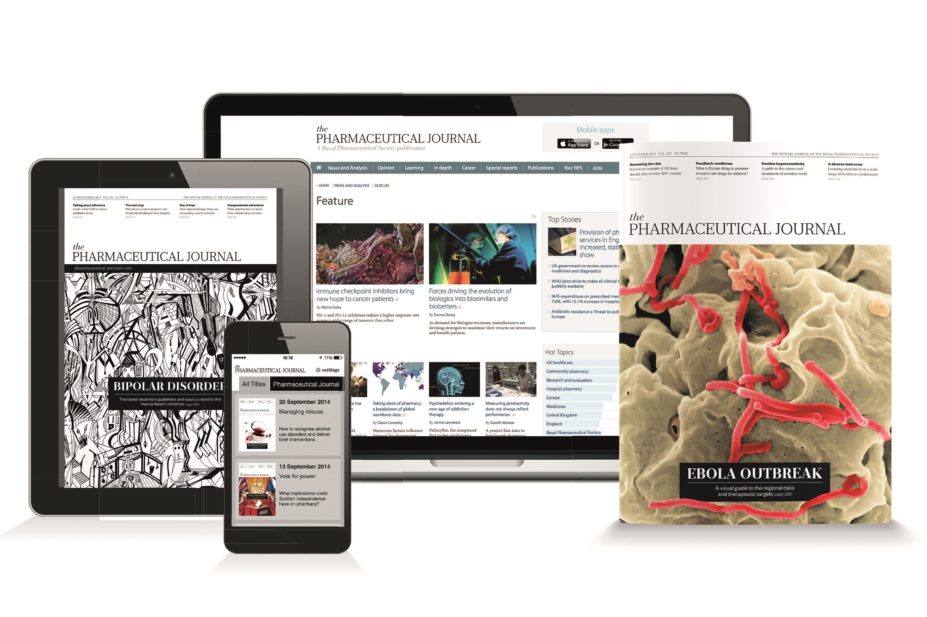
The Pharmaceutical Journal
In my previous blog post I explained how the fundamental changes to the editorial and publishing strategy of Pharmaceutical Journal Publications has resulted in a significant expansion in our reach and influence, and how The Pharmaceutical Journal has evolved from a B2B trade magazine into a professional journal. I explained the challenge that professional societies and associations face in the 21st century virtualised society, and how the roles of these societies and associations need to evolve alongside the communities and societies they serve.
So, as you will have seen in the official announcement by the President and the CEO of the Royal Pharmaceutical Society (RPS), we are entering the next phase of our evolution, with three main changes. First, The Pharmaceutical Journal’s frequency will change from weekly to monthly. Secondly, all members of the RPS will also receive Clinical Pharmacist, the other journal in our portfolio, as part of their membership. And thirdly, from January 2016, Clinical Pharmacist will turn into a peer-reviewed publication for continuing professional development (CPD), review, practice reports and perspective articles on the science and practice of pharmacy.
There are many good reasons for doing this but, before going into what this means, it’s worth mentioning that the output from us won’t change. Currently The Pharmaceutical Journal is published 40 times a year, each issue is 32 pages (i.e. 1,280 pages in total). However, the actual ‘editorial’ content produced annually is around 1,000 pages. In this new model, members will receive 768 pages of The Pharmaceutical Journal, plus 384 pages of Clinical Pharmacist. That is 1,152 pages a year. However, if we take out the number of ‘repeated’ pages in each issue (e.g. covers, tables of contents, etc.), the actual editorial output remains the same. More importantly, publication of the daily news on pharmaceutical-journal.com will continue, which means that we are actually increasing our editorial output.
Having said that, and editorial output notwithstanding, there are other reasons for these changes.
The time for weekly publications seems to have passed. Now, readers access their specialist news when they want it, where they want it. Pharmaceutical-journal.com is now the real-time publishing platform for news. Readers can no longer wait for a week before they become aware of the important news they really need to know. On the other hand, ‘print’ is still a very useful medium for reading long-form articles such as features, insights, learning articles and news analysis. While all these articles will appear primarily on the online platform, the new, expanded print version of The Pharmaceutical Journal allows readers to browse through a variety of insights and other long-form articles in a print edition.
Two common pieces of feedback we always receive are “the issues are quite thin” and “I don’t have enough time to read every week’s issue before the next one arrives”. While these two may seem contradictory, they are not. The volume of each issue is a matter of positioning. Not being able to keep up with the weekly cycle is a matter of practicality. By offering a more substantial issue of The Pharmaceutical Journal every month, we are solving two problems at once. We offer a more substantial edition, which positions it more appropriately as a serious publication in pharmacy practice, and we also provide readers with enough time to absorb the content of each issue over a longer period.
Over the past few years and through all feedback channels we have had with our members, the need for setting up a forum for publishing reports of latest research outcomes through a peer-review process has been expressed. This is what the function of the new Clinical Pharmacist will be: a forum for publishing the best evidence-based pharmacy practice, perspectives on the future of the science of pharmacy, and review articles on our state of knowledge about particular therapeutic areas and latest advancements in drug development and medical interventions.
By retaining the editorial output, but with fewer issues each year, we are also reducing our impact on the environment, both by lowering our paper consumption and minimising carbon emissions from transport delivering the journals.
Obviously things can change. We are adapting our strategy to the need of our readers today, with an eye on the future. But we never know what the future will bring. We will always be flexible in our publishing strategy in order to remain fit-for-purpose and useful.


